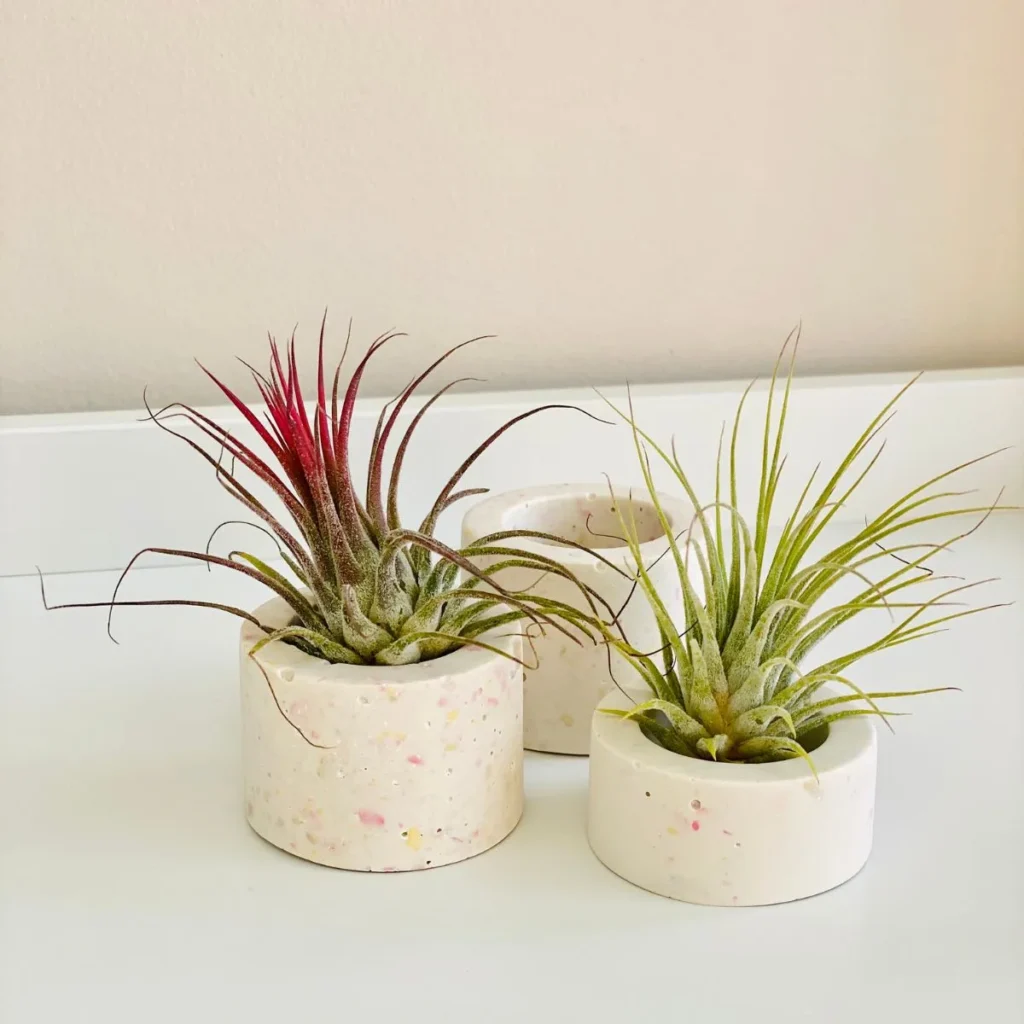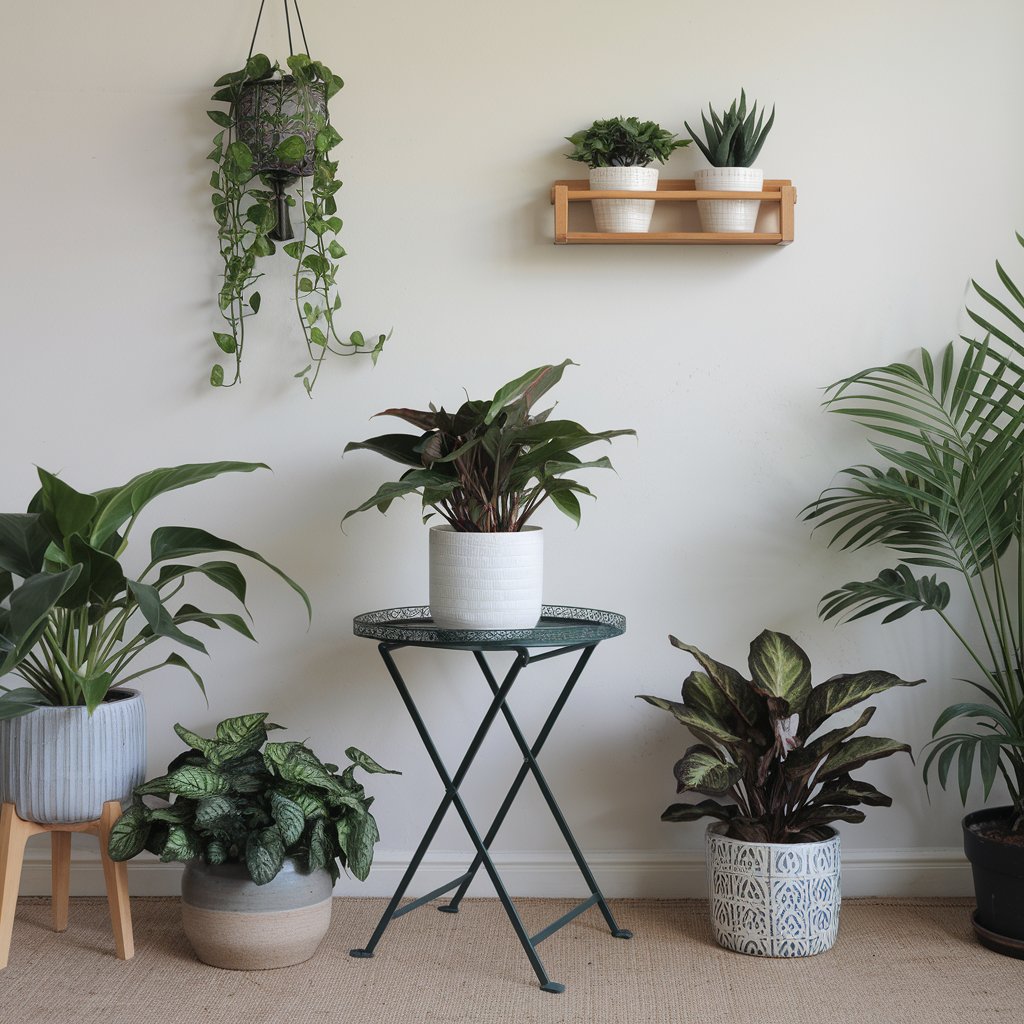Embracing air plants, also known as Tillandsia, can turn any space into a natural oasis. These plants are captivating and easy to care for. They have won the hearts of many gardeners and home decor lovers.
Whether you’re new to air plants or have experience, knowing how to care for them is crucial. This guide will share essential tips and techniques. You’ll learn about their natural habitats, growth patterns, watering, and lighting needs. This knowledge will help you create a vibrant air plant collection that brightens your space.
Key Takeaways
- Air plants are low-maintenance, unique houseplants that thrive without soil.
- Proper care, including watering, lighting, and humidity management, is crucial for healthy air plant growth.
- Understanding the native habitats and growth patterns of different air plant varieties can help you provide the optimal care they need.
- Mastering the art of watering, including soaking and misting techniques, is essential for maintaining a thriving air plant collection.
- Ensuring the right light levels and temperature range is key to creating an environment that supports the healthy development of your air plants.
Understanding Air Plants: Nature’s Low-Maintenance Wonders
Air plants are truly amazing natural wonders. They grow without soil, getting their nutrients and moisture from the air. Let’s dive into where they come from, how they grow, and the types perfect for beginners.
Native Habitats and Natural Growth Patterns
Air plants, or Tillandsia, come from warm, humid places. They live on trees, rocks, or other surfaces. Unlike most plants, they get water and nutrients through their leaves, not roots.
This unique way of growing lets air plants live in many different places. They can be found in both wet rainforests and dry deserts.
Common Types of Air Plants for Beginners
For beginners, some air plants are better than others. The Tillandsia xerographica and Tillandsia ionantha are great choices. They have unique shapes and are easy to care for.
The Tillandsia usneoides, or Spanish moss, is also a good start. It’s easy to care for and looks beautiful.
How Air Plants Absorb Nutrients
Air plants have special leaves called trichomes. These tiny scales help them grab moisture, nutrients, and even tiny particles from the air. This special trick lets them grow well without soil.
Essential Care Requirements for Healthy Air Plants
Caring for air plants, also known as Tillandsia, is all about finding the right balance. They need water, light, and air circulation. Since they don’t need soil, knowing their specific needs is key to keeping them looking great and healthy.
Watering: The Gentle Approach
Air plants soak up moisture through their leaves. So, a gentle watering routine is a must. Soak your air plants in water for 15-20 minutes once a week, letting them fully absorb the moisture. After soaking, gently shake off any extra water to avoid rot.
Lighting: Finding the Right Balance
Air plants love bright, indirect light. They should get several hours of sunlight a day. However, avoid exposing them to direct sunlight, as it may scorch their leaves. Rotate your air plants regularly to make sure they get even light.
Air Circulation: Keeping Things Breezy
Good air circulation is crucial for air plants. It prevents moisture buildup, which can cause fungal growth. Gently mist your air plants every few days or put them in a well-ventilated area for constant fresh air.
Temperature Preferences
Air plants do best in warm, humid places. Keep them in a temperature range of 60-80°F (15-27°C). Don’t expose your air plants to extreme temperatures or drafts, as it can stress them out.
By following these care tips, you can keep your air plants healthy and vibrant. They’ll add a natural beauty to your home.
Watering Techniques and Humidity Management
Proper watering is key for your air plants’ health and growth. Unlike regular plants, air plants don’t absorb water through roots. They use their leaves to soak up moisture from the air and water. Knowing how to water them right is crucial for their care.
Proper Soaking Methods
To water your air plants, soak them in lukewarm water for 10-15 minutes once a week. Use a bowl or sink filled with clean water. After soaking, shake off extra water and return them to their spot.
Misting Schedules and Best Practices
Also, mist your air plants a few times a week to keep humidity right. Use a spray bottle with clean water. Lightly mist the leaves, avoiding the plant’s center to prevent rot. Mist in the morning so the moisture can absorb before night.
Signs of Over and Under-Watering
It’s important to know when your air plants need more or less water. Wilted, gray, or brown leaves mean they’re thirsty. But, if leaves turn black or mushy, they’re getting too much water. Watch your plants closely and adjust your care routine to keep them healthy.
| Watering Issue | Symptoms | Solution |
|---|---|---|
| Under-Watering | Wilted, gray, or brown leaves | Increase soak and misting frequency |
| Over-Watering | Black or mushy leaves | Reduce soak and misting frequency |
Learning to water and manage humidity correctly will help your air plants thrive. They’ll add beauty and joy to your home.
Light Requirements and Temperature Control
Understanding light and temperature needs is key for air plant care. Do air plants need sunlight? Yes, but the type and amount vary by species.
Most air plants do well in bright, indirect light. They can handle some direct sunlight but too much can harm their leaves. Place them where they get filtered or diffused light, like near a window with sheer curtains.
- Tillandsia species, the most common air plant, need bright, indirect light for 12-14 hours a day.
- Some air plants, like Xerographica and Ionantha, can handle more direct sunlight but still need protection from strong midday rays.
- Air plants with greener leaves need less light than those with reddish or silvery leaves, which need more sunlight.
Air plants also need specific temperatures for caring for air plants. They prefer warm, humid environments with temperatures between 60°F and 85°F. Avoid sudden temperature changes or cold drafts to prevent stress and damage.
By knowing your air plants’ light and temperature needs, you can create the best environment for them. This way, they can thrive and show off their beautiful, low-maintenance beauty.
Conclusion
You’ve learned how to care for air plants, from their unique nature to the basics of their growth. You now know how to water, light, and control their temperature. This knowledge lets you grow these easy-to-care-for plants and enjoy their beauty at home or in the office.
Air plants add a special touch to any room. They come in many shapes and are very hardy. Keep an eye on their needs and adjust your care as you learn. With the right care, your air plants will grow well and look great.
Let air plants bring simplicity and beauty to your space. You can display them in many creative ways. Whether you hang them, put them in terrariums, or group them, the options are endless. Enjoy caring for these plants and see how they can change your space with their beauty.
FAQ
What are air plants?
Air plants, or Tillandsia, are special plants that don’t need soil. Air plants absorb nutrients and moisture directly from the air. This makes them easy to care for and great for decorating homes and offices.
Do air plants need sunlight?
Yes, air plants need sunlight or bright, indirect light to grow well. The light they need can change based on the type of plant. But most prefer a spot with several hours of bright, indirect sunlight each day.
How often should I water my air plant?
Watering air plants depends on the type, but a general rule is to soak them in water for 20-30 minutes once a week. Allow them to dry out fully between waterings to prevent rot.
How can I tell if my air plant is thriving?
A healthy air plant has green, flexible, and firm leaves. Look out for gray or brown leaves, drooping, or no new growth. If you notice these signs, adjust your care routine to help your plant.
Can I grow air plants indoors?
Yes, air plants are perfect for indoor spaces. Just make sure they get the right light, air, and water. Many air plant types are great for homes and offices.




